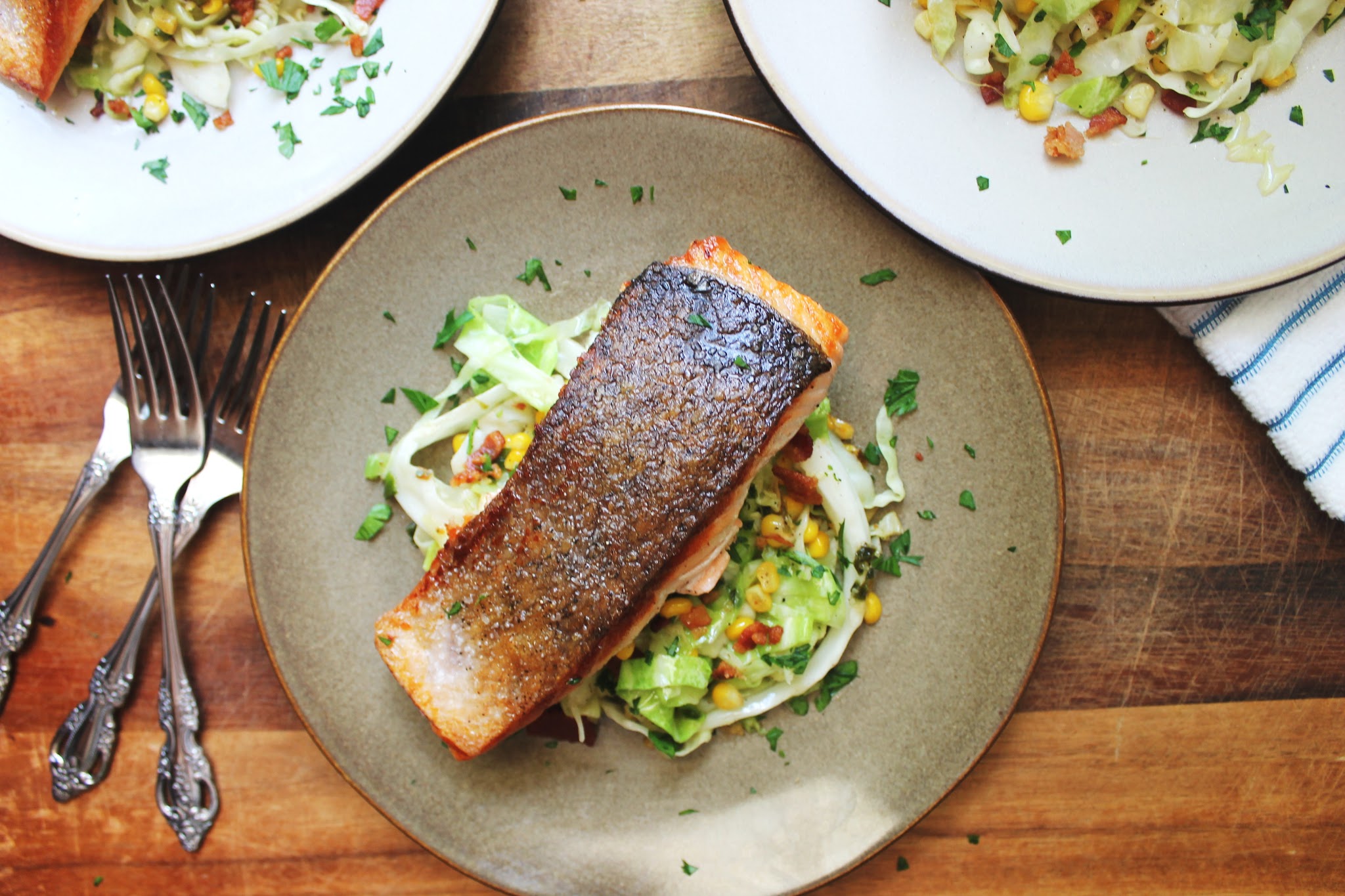 When James Beard Award-winning chef and restauranteur Suzanne Goin opened Lucques in 1998, the West Hollywood eatery quickly became a staple of the Los Angeles food scene. Part of its massive appeal was the Sunday Suppers that Goin instituted. With a focus on local ingredients and sustainability, word of mouth among the conscientious foodies in southern California quickly made it one of the hottest tickets in town. Fast forward to 2005, and the publication of her Sunday Suppers at Lucques cookbook, and her stellar, family style dishes became accessible to the wider public. This beautiful recipe collection is divided into sections that highlight the produce available in each of the four seasons. The recipes, presented in a series of three course menus, give home cooks the opportunity to create memorable, restaurant quality meals within the comfort of their own kitchens. The real beauty of this cookbook, though, is that you can provide your friends and family with an elevated dining experience with little fuss and all the warmth and ease of a family style dinner. What better way to spend a Sunday evening?
When James Beard Award-winning chef and restauranteur Suzanne Goin opened Lucques in 1998, the West Hollywood eatery quickly became a staple of the Los Angeles food scene. Part of its massive appeal was the Sunday Suppers that Goin instituted. With a focus on local ingredients and sustainability, word of mouth among the conscientious foodies in southern California quickly made it one of the hottest tickets in town. Fast forward to 2005, and the publication of her Sunday Suppers at Lucques cookbook, and her stellar, family style dishes became accessible to the wider public. This beautiful recipe collection is divided into sections that highlight the produce available in each of the four seasons. The recipes, presented in a series of three course menus, give home cooks the opportunity to create memorable, restaurant quality meals within the comfort of their own kitchens. The real beauty of this cookbook, though, is that you can provide your friends and family with an elevated dining experience with little fuss and all the warmth and ease of a family style dinner. What better way to spend a Sunday evening?
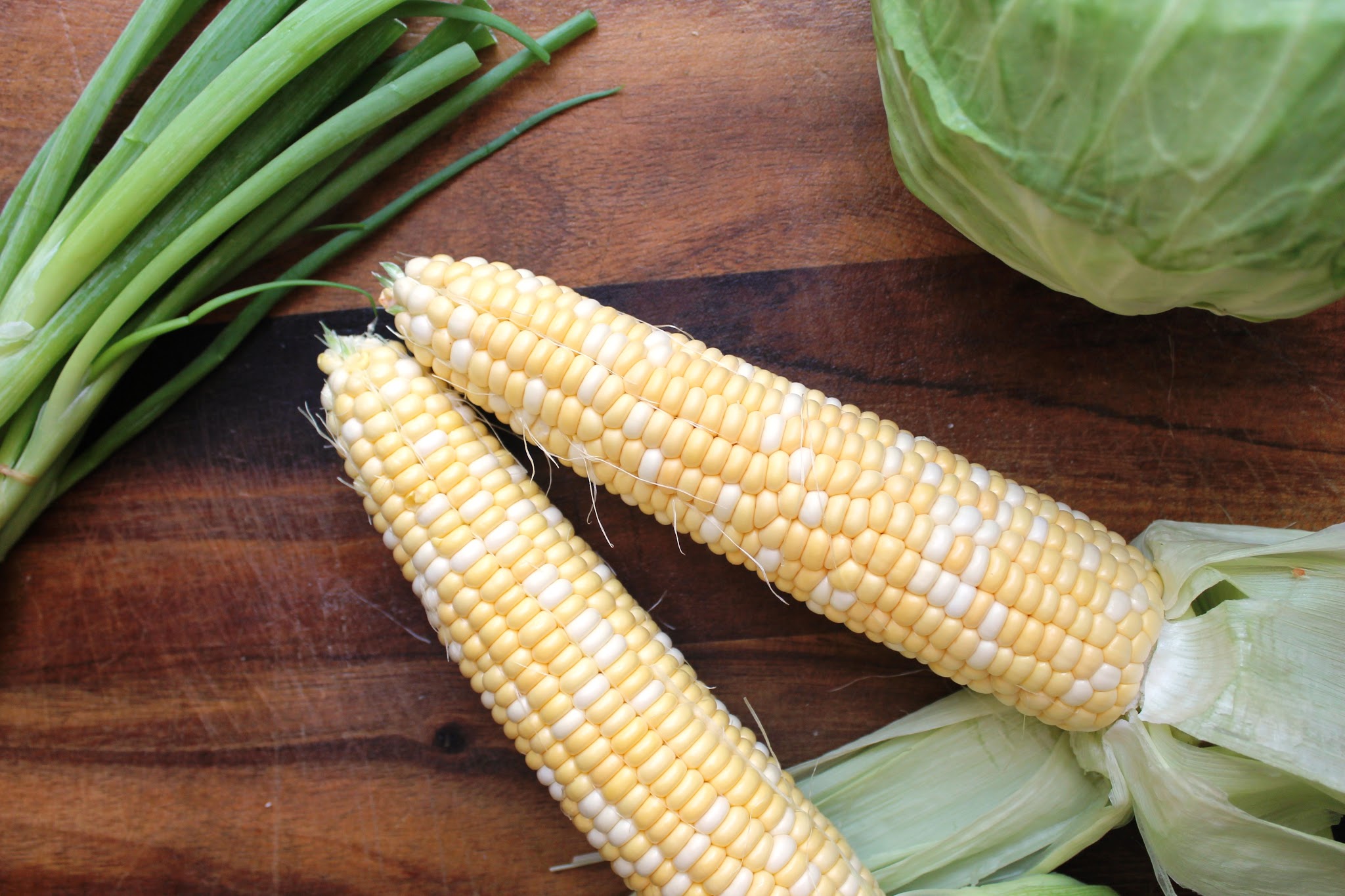 As we’re still in the grip of a summer heat wave, we were looking for a lighter, simpler summer meal and this recipe did not disappoint one little bit. The original version called for the salmon to be soaked in an egg and breadcrumb mixture, which was omitted for a couple of reasons. First, and most obvious, because we needed a gluten free option, so the breadcrumbs were out. Second, even if we had chosen to use gluten free breadcrumbs, the coating would have made the dish a little heavier than we wanted. A simpler, lighter option was a lovely pan seared salmon fillet. It was much less labor intensive, and served our purpose so much better.
As we’re still in the grip of a summer heat wave, we were looking for a lighter, simpler summer meal and this recipe did not disappoint one little bit. The original version called for the salmon to be soaked in an egg and breadcrumb mixture, which was omitted for a couple of reasons. First, and most obvious, because we needed a gluten free option, so the breadcrumbs were out. Second, even if we had chosen to use gluten free breadcrumbs, the coating would have made the dish a little heavier than we wanted. A simpler, lighter option was a lovely pan seared salmon fillet. It was much less labor intensive, and served our purpose so much better.
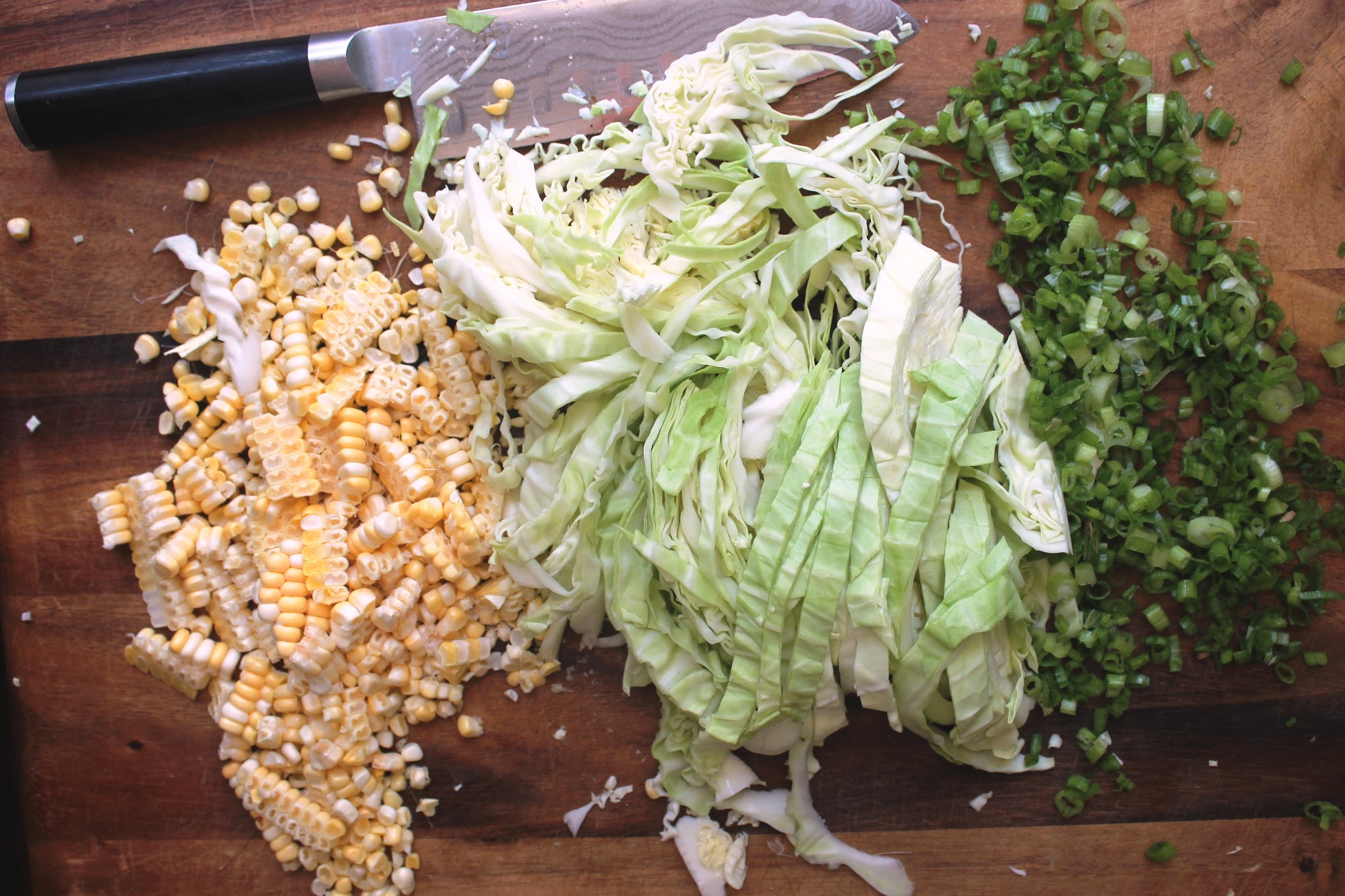 The trick to getting that beautiful “crisp” is a generous application of kosher salt to the skin of the fish while preheating the skillet. The salt will draw out enough of the moisture from the skin, so that it will caramelize, rather than steam. Just pat it dry before re-seasoning and cooking to remove the surface moisture and the excess salt.
The trick to getting that beautiful “crisp” is a generous application of kosher salt to the skin of the fish while preheating the skillet. The salt will draw out enough of the moisture from the skin, so that it will caramelize, rather than steam. Just pat it dry before re-seasoning and cooking to remove the surface moisture and the excess salt.
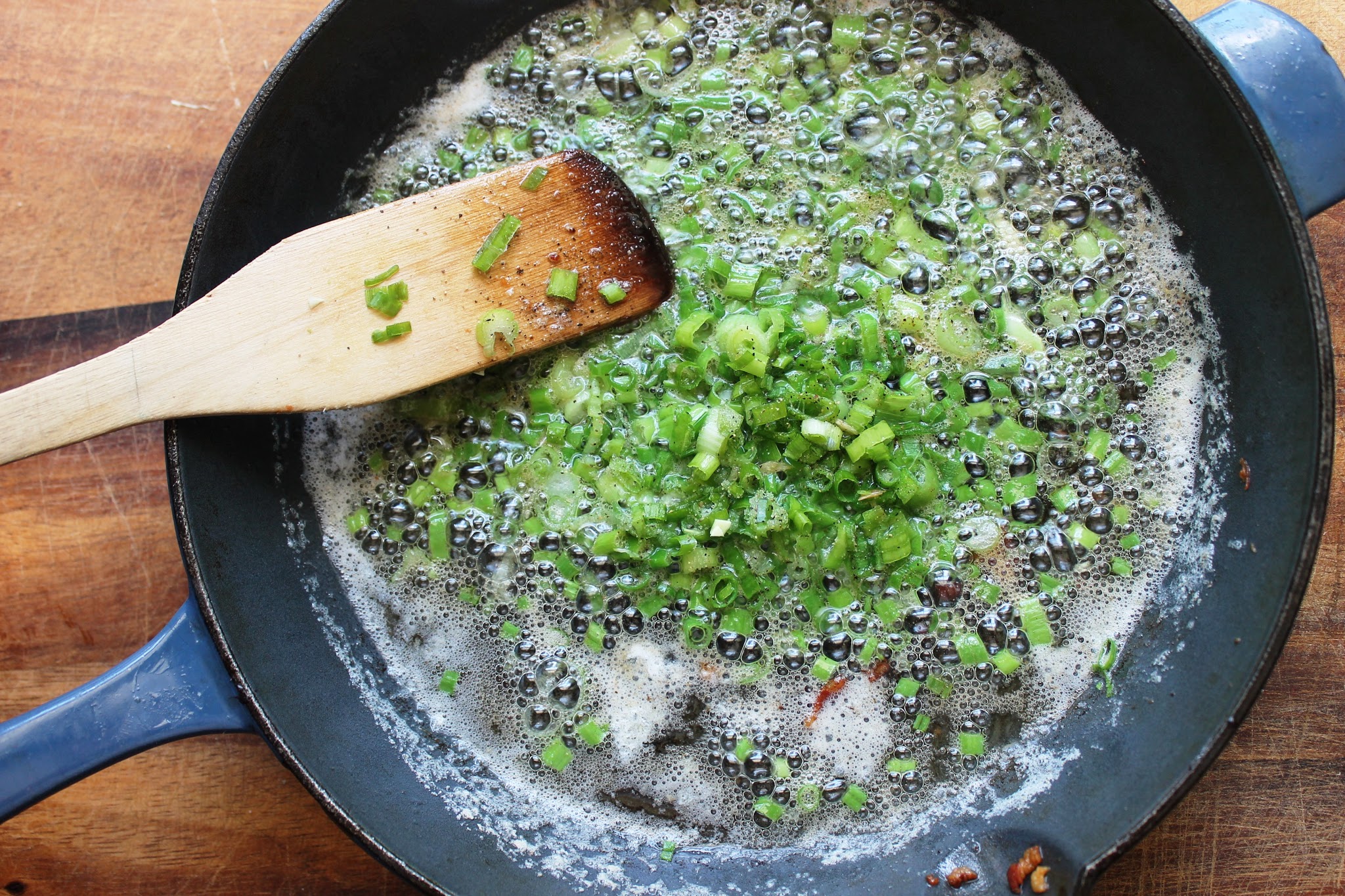 Place the fillet in the pan skin side down and just let it hang out there for 5-7 minutes, ensuring a perfect sear. Don’t try to move the fillet around in the pan, as it will break apart before it has the chance to really cook and firm up well enough to flip. This step trips up a lot of less experienced cooks, whether because they lack the patience to wait (guilty), or they’re just afraid of burning the fish. We can’t really help with the patience issue, other than to promise that the results are worth the wait, but to protect against the latter, use a thin spatula to gently lift the edge of the fish after five minutes to check the progress of the skin. Once you see that dark, crispy edge and the flesh has turned opaque about halfway up the filet, go for the flip. Be gentle, but be bold. A fish spatula would be a great investment if you don’t already have one. Once you flip the fish, it’ll cook for another minute or two.
Place the fillet in the pan skin side down and just let it hang out there for 5-7 minutes, ensuring a perfect sear. Don’t try to move the fillet around in the pan, as it will break apart before it has the chance to really cook and firm up well enough to flip. This step trips up a lot of less experienced cooks, whether because they lack the patience to wait (guilty), or they’re just afraid of burning the fish. We can’t really help with the patience issue, other than to promise that the results are worth the wait, but to protect against the latter, use a thin spatula to gently lift the edge of the fish after five minutes to check the progress of the skin. Once you see that dark, crispy edge and the flesh has turned opaque about halfway up the filet, go for the flip. Be gentle, but be bold. A fish spatula would be a great investment if you don’t already have one. Once you flip the fish, it’ll cook for another minute or two.
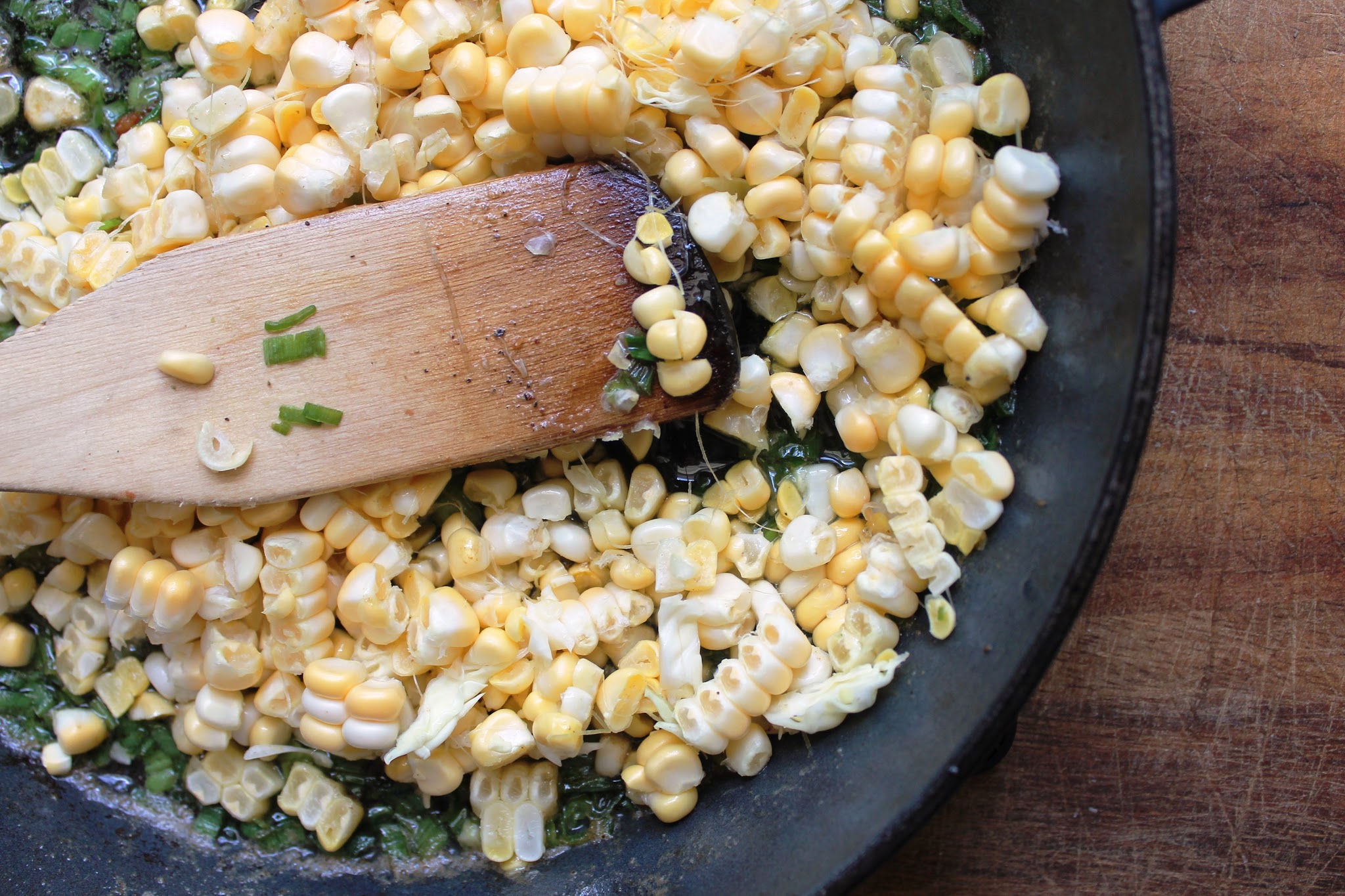
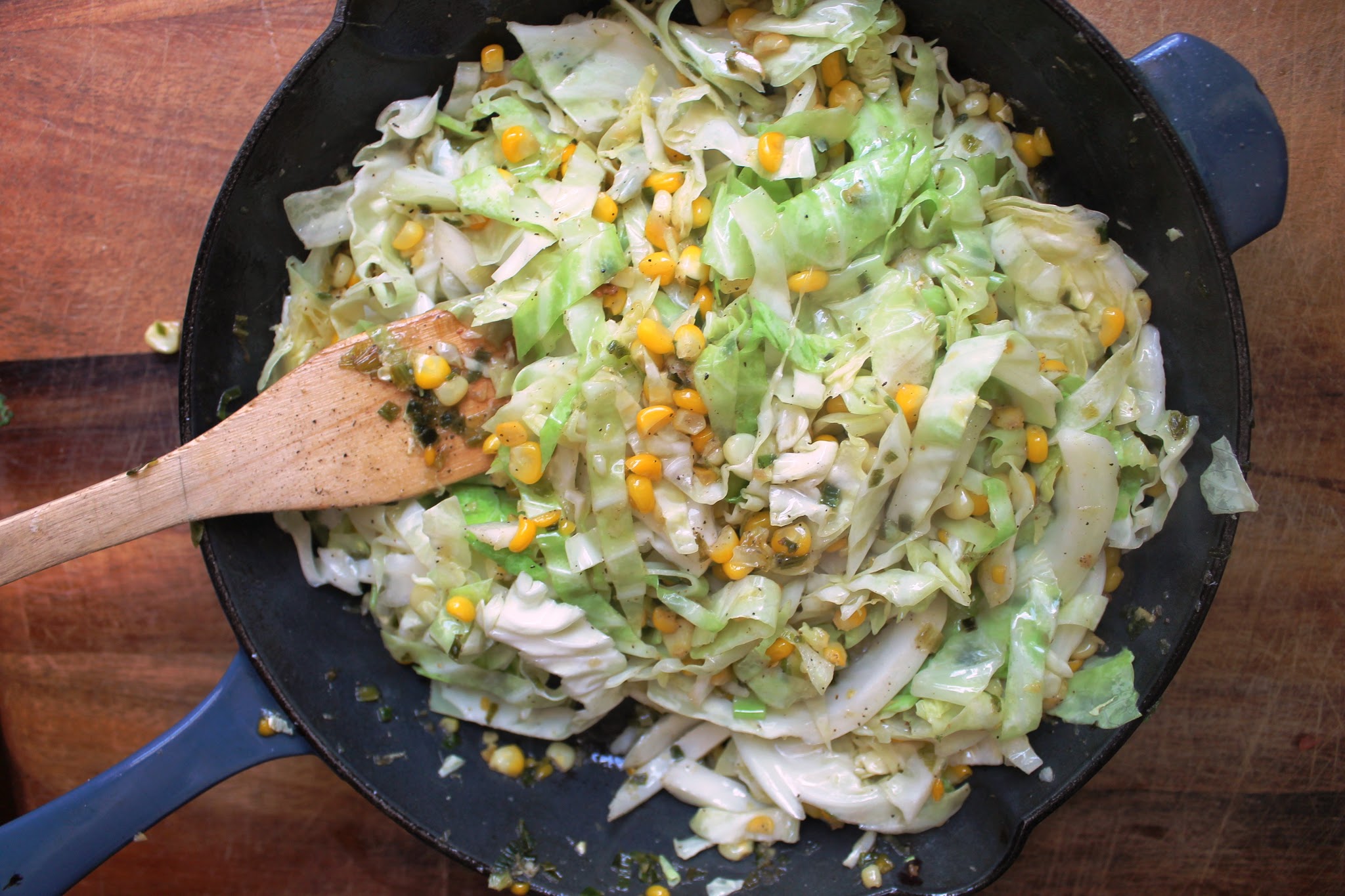 The end result is a wonderful contrast between the crispy, caramelized skin and the moist, buttery meat of the fish, giving the dish flavor and texture that practically melt in your mouth. For any grill enthusiasts out there, the same results can be achieved on a well-oiled, properly heated grill.
The end result is a wonderful contrast between the crispy, caramelized skin and the moist, buttery meat of the fish, giving the dish flavor and texture that practically melt in your mouth. For any grill enthusiasts out there, the same results can be achieved on a well-oiled, properly heated grill.
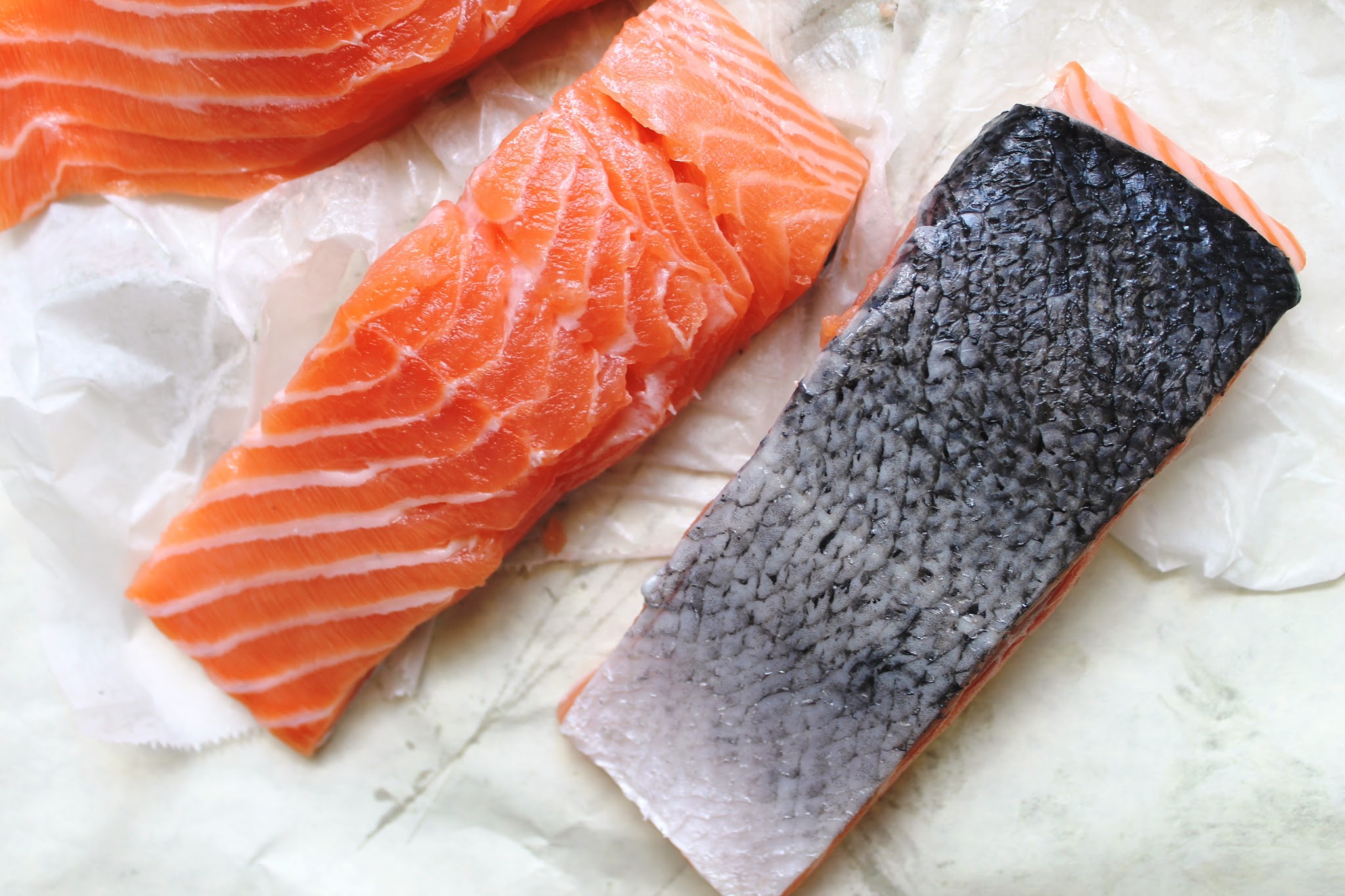 We served the fillet over a sauté of bacon, corn and cabbage. Another change to the original recipe was to skip the brown butter vinaigrette, despite the fact that we absolutely loved it in the Fingerling Potato Salad. As much as it pained us to forego anything that involves brown butter, we figured that the bacon fat and butter that were already in the sauté were sufficient indulgences for such a “light” dish. We’ll save the heavier version for Autumn and Winter.
We served the fillet over a sauté of bacon, corn and cabbage. Another change to the original recipe was to skip the brown butter vinaigrette, despite the fact that we absolutely loved it in the Fingerling Potato Salad. As much as it pained us to forego anything that involves brown butter, we figured that the bacon fat and butter that were already in the sauté were sufficient indulgences for such a “light” dish. We’ll save the heavier version for Autumn and Winter.
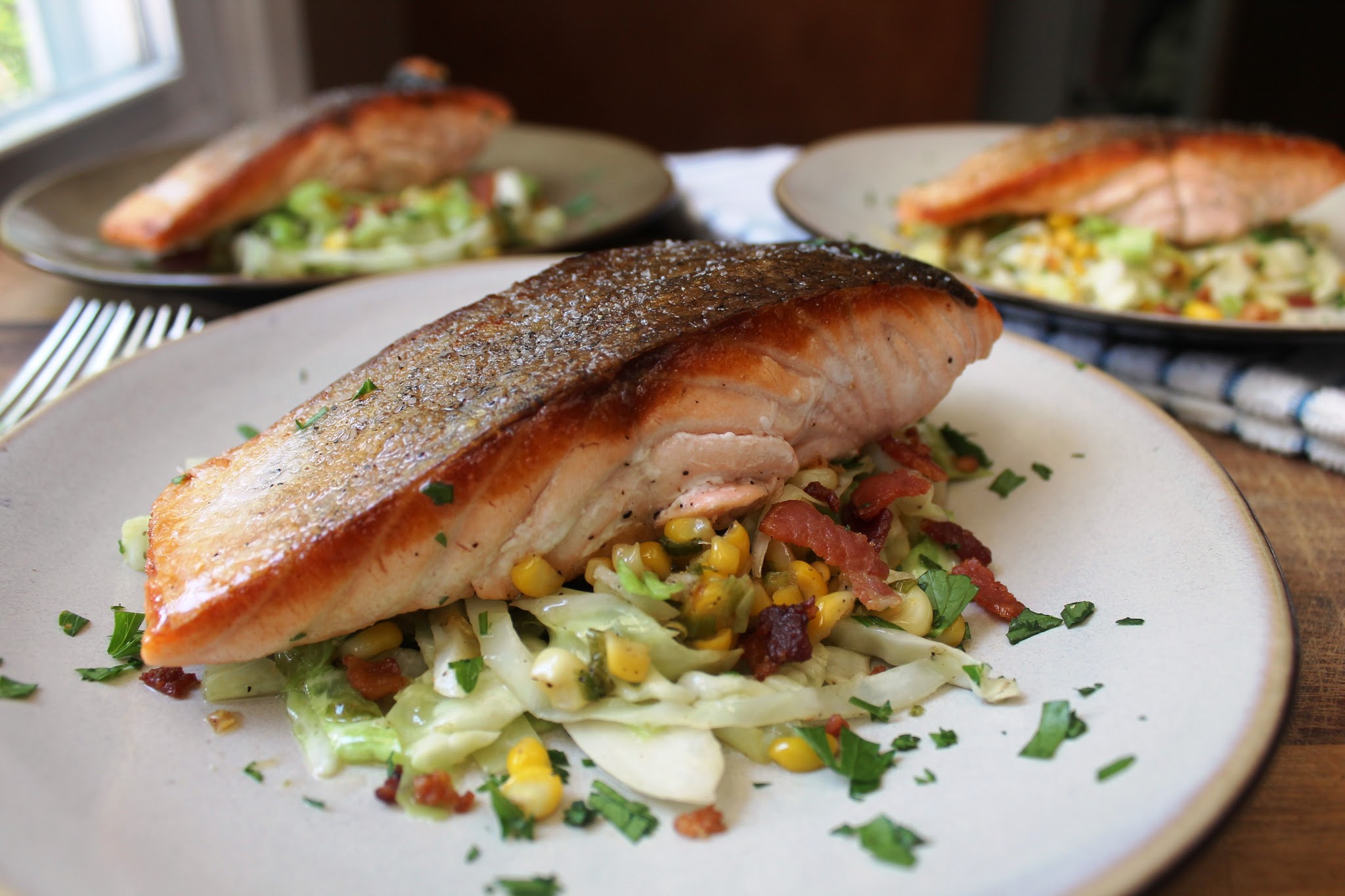 The sauté also leaves room for interpretation, which is right up our alley. Kyle talked about adding diced jalapeños to the mix for a little extra heat, to which the only proper response is “Yes, please.” Feel free to mix it up with other vegetables and any firm, flaky fish that suits your taste. Let us know how it is, but we’re fairly certain that the results will be just as gorgeous and spectacular. Happy cooking! (And eating, of course.)
The sauté also leaves room for interpretation, which is right up our alley. Kyle talked about adding diced jalapeños to the mix for a little extra heat, to which the only proper response is “Yes, please.” Feel free to mix it up with other vegetables and any firm, flaky fish that suits your taste. Let us know how it is, but we’re fairly certain that the results will be just as gorgeous and spectacular. Happy cooking! (And eating, of course.)
Adapted from Sunday Supper at Lucques.
- Ingredients:
- 4 salmon fillets, 6 ounces each
- Kosher salt and ground black pepper
- 2 tablespoons extra virgin olive oil
- 5 ounces slab bacon, thinly sliced
- 1 tablespoon unsalted butter
- ¾ cup thinly sliced spring onions
- Corn sliced from 2 ears (About 1½ cups kernels)
- ½ small green cabbage, cored, thinly sliced lengthwise
- 1 teaspoon white wine vinegar
- 2 tablespoons chopped parsley
- To prepare the salmon, generously sprinkle kosher salt on the skin of the salmon fillets and let rest at room temperature for 5 to 10 minutes (this draws out excess moisture from the skin). Pat the skin dry with paper towel then season with black pepper.
- Heat a large skillet over medium heat. Add the oil and the salmon fillets, skin side down, and cook for 6 minutes. Do not move or flip the salmon at this time; this will get the skin very crisp. Flip salmon and cook for another 2 minutes. Remove salmon from the heat.
- To prepare the Bacon, Corn and Cabbage, heat a large skillet over medium heat for 1 minute. Add the bacon and cook for about 5 minutes, stirring often, until tender and lightly crisped. Using a slotted spoon, transfer bacon to a paper-towel lined plate, leaving the fat in the pan.
- Swirl in the butter, and when it foams, add the spring onions, ½ teaspoon salt and a pinch of pepper. Cook over medium heat, about 3 minutes, then add the corn and continue cooking another 3 minutes, stirring occasionally. Add the cabbage and cook 2 minutes, stirring occasionally, until the cabbage just wilts. Add the vinegar and adjust seasoning with salt and pepper to taste.
- To serve, place a generous mound of the corn and cabbage mixture in the center of 4 plates. Garnish with reserved cooked bacon and chopped parsley, then top each mound with one cooked salmon fillet.
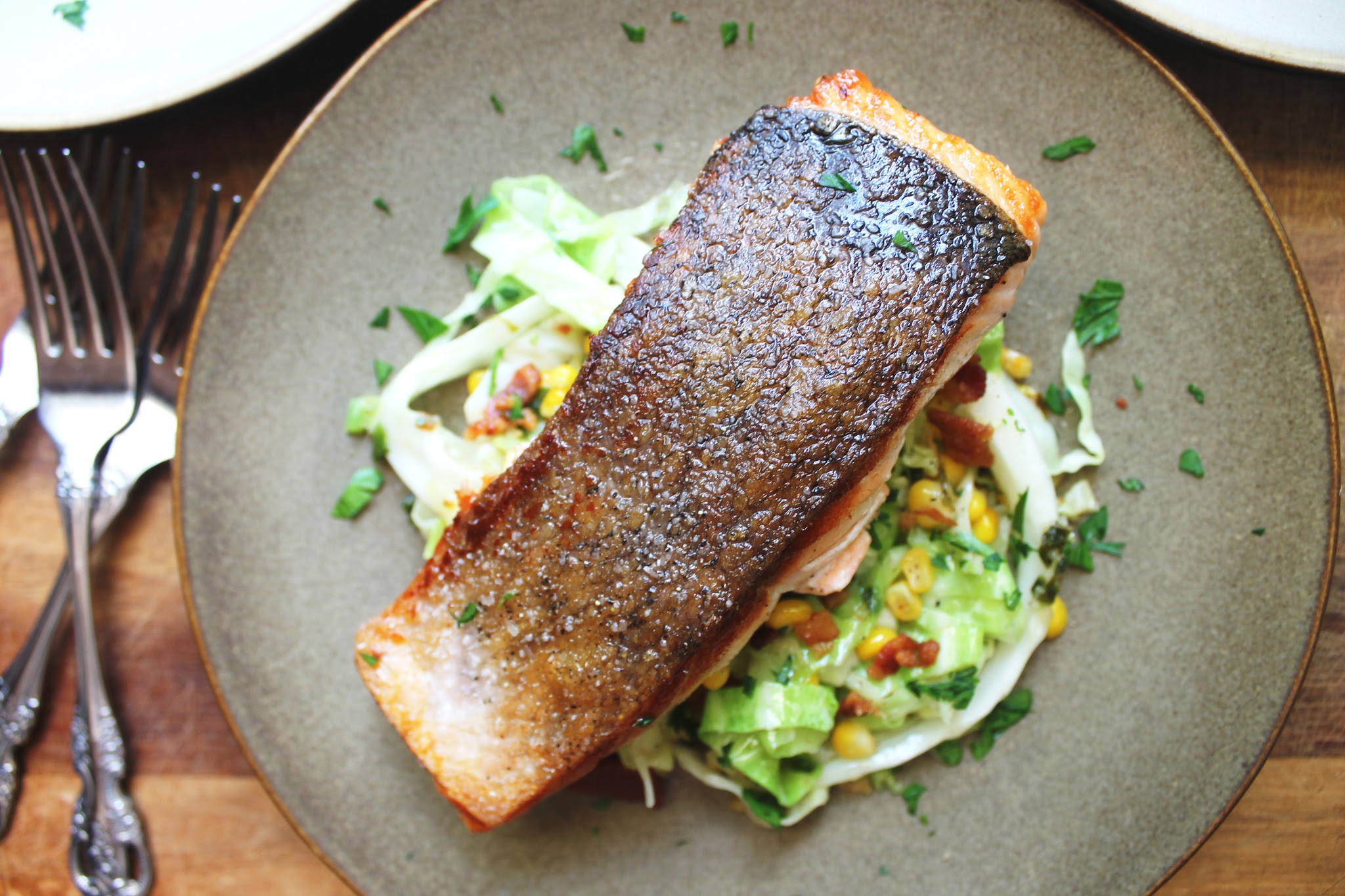
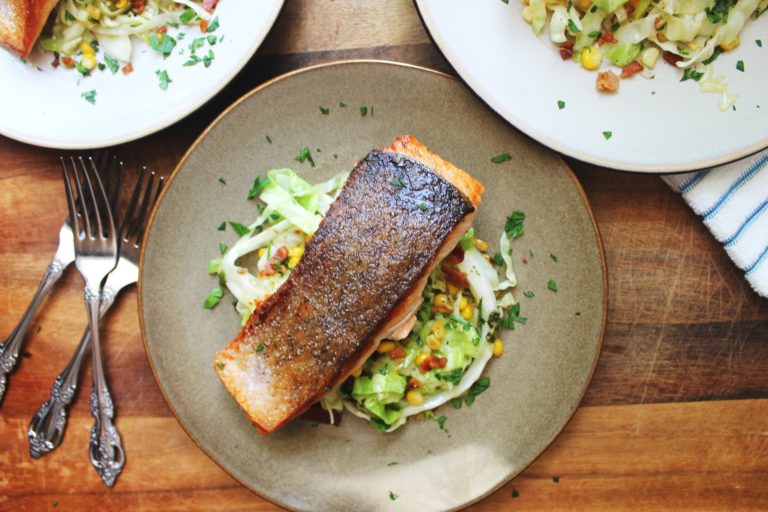
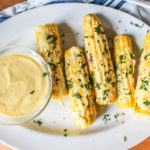
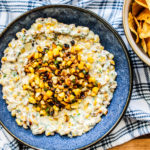
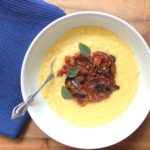

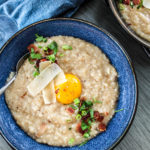
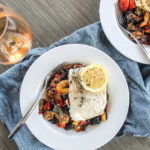
Leave a Reply